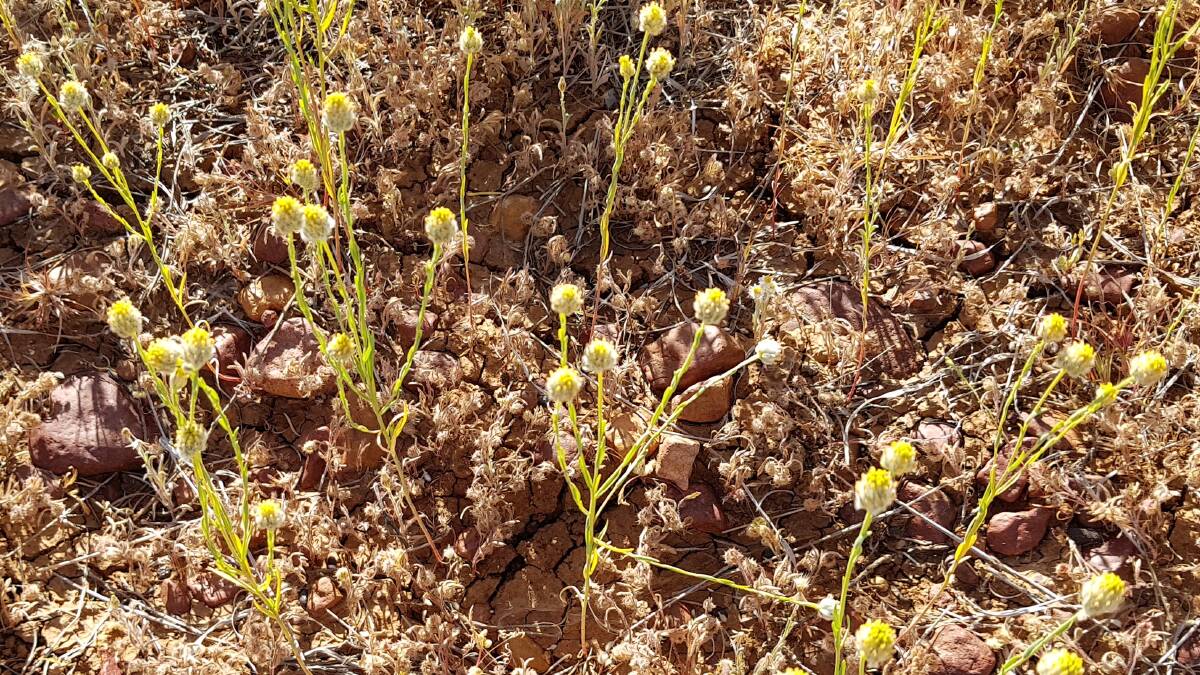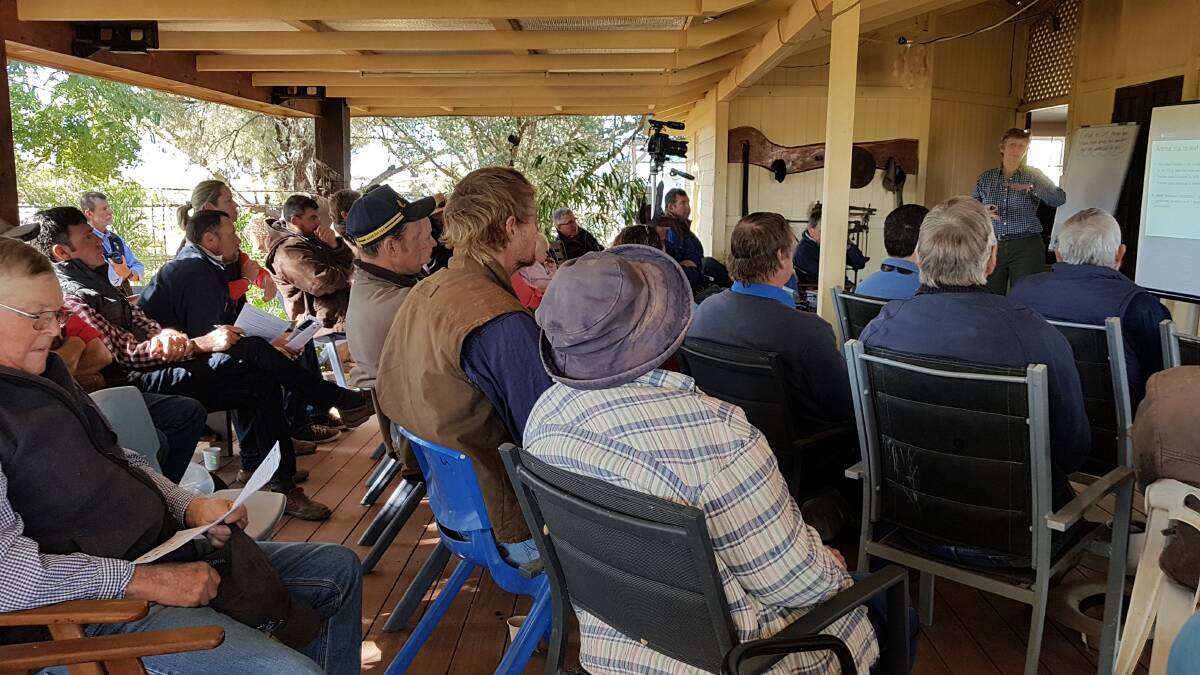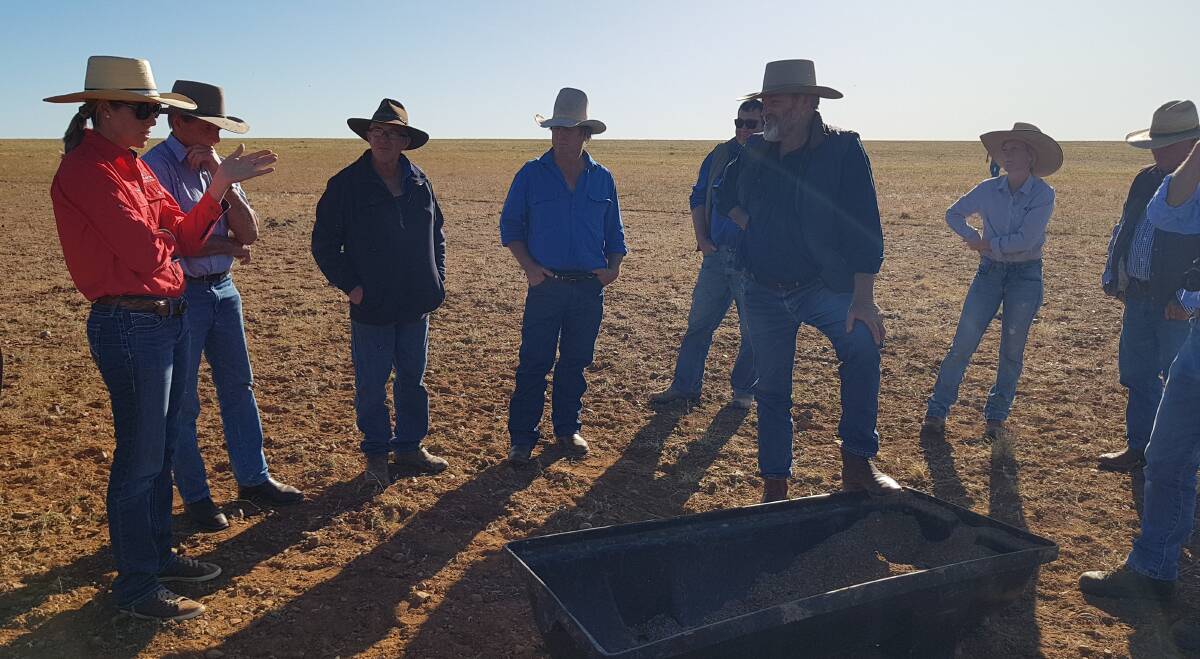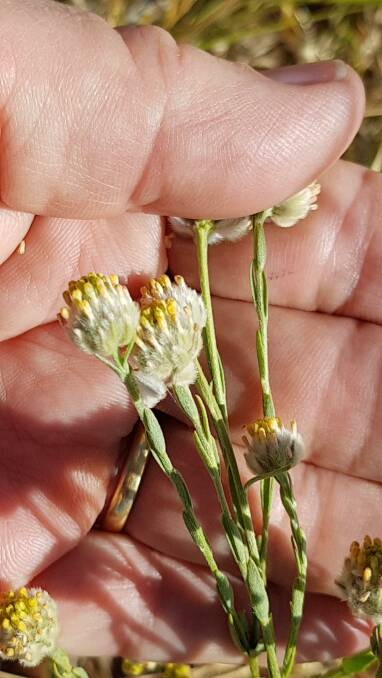
Sodium bentonite and biochar have been identified as effective agents in the fight to combat the toxicity of pimelea, according to the latest research, but there is a complication.
Making sure cattle eat licks containing the rumen adsorbents when there's green feed available in paddocks that also have pimelea plants flowering is the challenge confronting livestock managers and researchers alike.
Pimelea poisoning typically rears its head on country that's recovering from drought that receives autumn and winter rain, which is the state that much of western and south western Queensland country is in at present, which makes the latest research findings especially relevant.
The results of the $1.5m Meat & Livestock Australia-funded project were presented at a field day in the Stonehenge district last week, attended by around 50 people from as far afield as Thargomindah.

According to laboratory and cattle feeding trials, sodium bentonite and fully activated biochar heated to 1000 degrees were effective rumen adsorbents, binding 95 per cent of the Pimelea simplexin toxin.
AgForce senior policy officer Marie Vitelli said it was found that cattle prefer bentonite to biochar, and that the sodium bentonite was better at addressing the problem of the pimelea toxin binding to blood vessels and restricting the flow of oxygen.
"The trial fed 80 grams per head per day to cattle, while producers from Roma and Begonia prevented toxicity symptoms by feeding 100 to 200g per day," she said.
"They said their cattle came through quite well and their cattle had shiny coats.
"It seems that if lick containing bentonite is fed all year, cattle are less likely to go off the lick when green pasture growth appears after September, but it needs more fine tuning.
"I think you could say there's progress, but pimelea is a very difficult plant to manage.
"The silver bullet that producers have been hoping for hasn't been found yet."

The native plant is widespread in western Queensland at present, according to Ms Vitelli, which she said was compounding problems for producers that were unable to access pastures after years of drought, restricting their restocking hopes.
"There were lots of cattle deaths in 2016 when there were similar conditions," she said. "That resulted in a real call to action through the MLA."
The research conducted by QAAFI's Professor Mary Fletcher and DAF microbiologist Diane Ouwerkerk was initially looking at creating a rumen inoculum, but Ms Vitelli said none of the 110 rumen fluid samples supplied broke down the toxin, which meant no successful rumen drench was going to be made available.
The research is still looking into biodegradable biopolymer materials to develop a rumen bolus that could trickle feed small amounts of simplexin into the rumen.
This would help sustain a small population of bacteria that could degrade the toxin, even when cattle were not grazing on pimelea plants.
Ms Vitelli said last week's field day expressed interest in ongoing paddock feeding trials that could help refine the best rate to feed sodium bentonite out at, to minimise toxicity.
"There may also be opportunities in the future to look at how the toxin binds to blood vessels that then restricts oxygen flows," she said.

Bulls affected
Quilpie graziers Peter and Wendy Sheehan are one of many producers grappling with the proliferation of pimelea this year, saying that while they have reasonable ground cover, they were having an issue with bulls newly introduced to their property, Trinidad.
"We brought our bulls home when we were mustering for vibrio vaccines, and put them in a big holding paddock," Ms Sheehan said.
"Within a month they were crook, especially the younger ones.
"We yarded them and put them on hay but it took a month before they'd recovered."

Ms Vitelli said it had been determined that livestock with higher energy requirements, especially bulls and weaners, were impacted more by the toxin.
"Producers need to know cattle only need to eat one small plant a day, for a month, to bring about symptoms," she said.
"By the time they've got brisket and lower jaw swelling, they've got no energy to move then, because they can't get oxygen in their blood.
"When you see the ruffled coat and scouring, act then, but you've only got about a week to move them.
"I think producers with pimelea and cattle really need to know it's around this year, and it's very toxic."
Ms Vitelli said she understood sheep and goats weren't affected in the same way because the location of their aortic blood vessel meant the blood flow wasn't restricted in the same way it was with cattle.
She said they were hoping to run a similar field day in the Roma region in October, saying their pimelea growth wasn't as advanced this year as it was in the central west.
ALSO MAKING NEWS:


